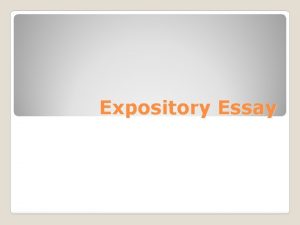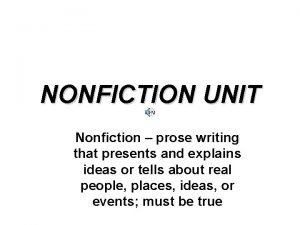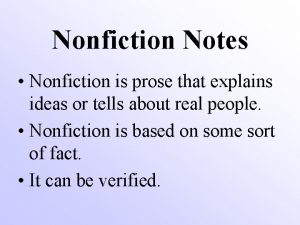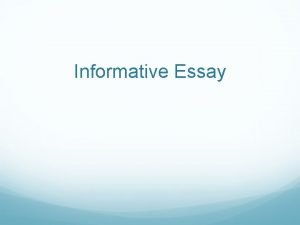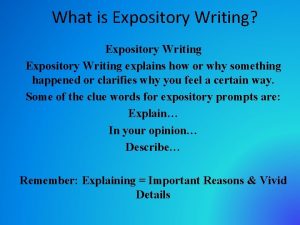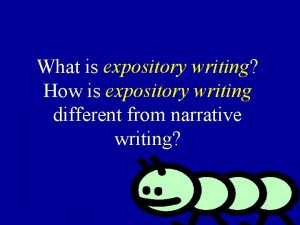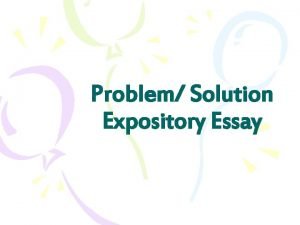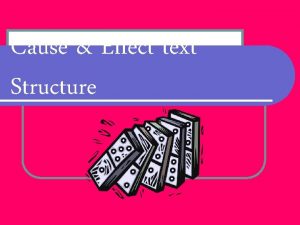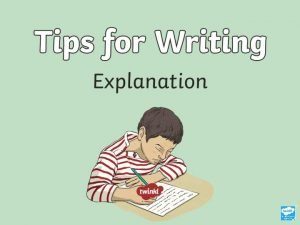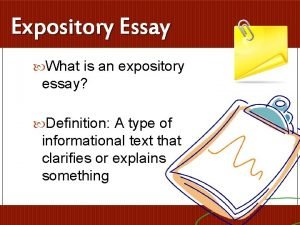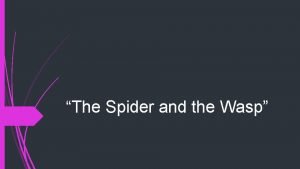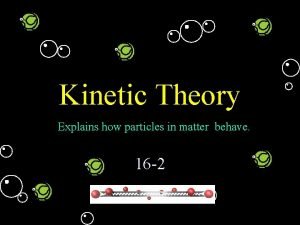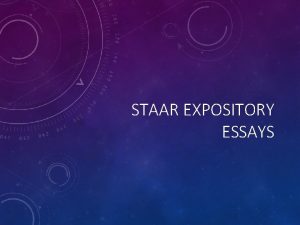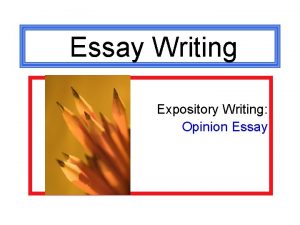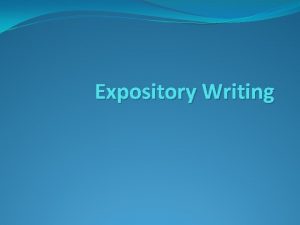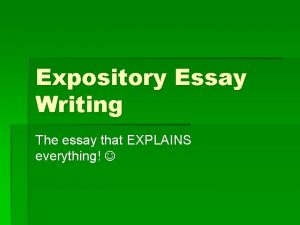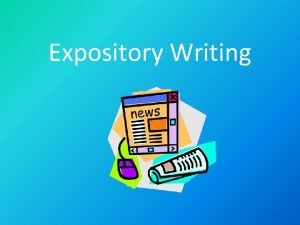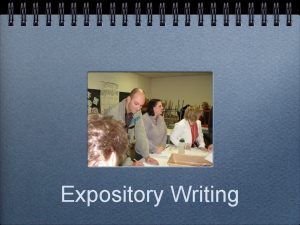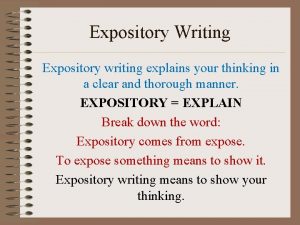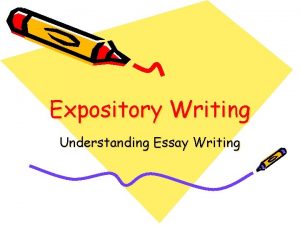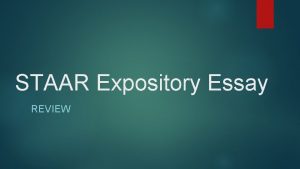EXPOSITORY WRITING EXPOSITORY ESSAY Expository writing explains and
















- Slides: 16

EXPOSITORY WRITING

EXPOSITORY ESSAY • Expository writing explains and informs. • It presents information and does not argue for or against a point or seek to defend an opinion. • Encyclopedia articles are examples of expository writing.

CHARACTERISTICS • It seeks to inform readers about a specific subject. • It presents information efficiently. • Consider who your audience is and what they will already know about the subject and thus what you still need to explain. • You do not want to bore or overwhelm your reader.

CHARACTERISTICS • It tries to engage the reader’s interest. • It should instruct and inform. • It relies almost exclusively on established information. • Don’t forget to acknowledge your sources, use quotation marks correctly and document all of your sources.

CHARACTERISTICS • It does not include the author’s experiences or feelings. • It does not express an opinion to be defined. The material is presented in a direct and unbiased way.

CHARACTERISTICS Analysis Comparison Cause and Effect Definition Classification Process Analysis Examples

TYPES OF WRITING • Cause and Effect: shows the relationship between one and another. • Process Narration: explains how an event unfolds using time or space sequencing • Compare and Contrast: compares the relevant similarities and differences between two people, places, • Problem and Solution: or objects. Compare and describes a problem and contrast essays can have a relays potential solutions point-by-point or subject by subject organization • Descriptive: depicts the attributes of a person, place, or object.

Introduction to the Essay

Introduction to the Essay Thesis Statement Introduction Developmental paragraphs Conclusion

Thesis Statement • Expresses an opinion, attitude, or idea. • It is the main statement of the entire essay. • It should not be written as a question. • It should be expressed as a complete sentence. • It should only express only one idea toward one topic.

Thesis Statement example • Not a thesis statement: - I am going to discuss the effects of smoking. • Thesis Statement: - The effects of smoking are bad for your health.

Introduction • Introduces the topic and informs the reader of the topic discussed. • Generally, the introductory paragraph should include thesis statement. • A good introductory paragraph indicates: - Causes, effects, reasons; whether it classifies, describes, narrates, or explains a process.

Developmental Paragraphs • Each developmental paragraph discusses one aspect of the main topic. • The controlling idea should echo the central idea in thesis statement. • The train of thought at the end of one paragraph should be picked up at the beginning of the next paragraph.

Example • Thesis statement: - In order to make a good impression atg a job interview, you should prepare well for the interview. • Question: - How should you prepare well?

Example • Answers: - Plan your answers to the possible questions the interviewer might ask. - Carefully plan and prepare what you are going to wear. - You should make sure to arrive on time.

Conclusion • A conclusion can restate the main points (subtopics). • It can restate thesis, but in different words. • It should not bring up a new topic.
 Structure expository essay
Structure expository essay Which type of essay explains informs defines
Which type of essay explains informs defines Prose writing that presents and explains ideas
Prose writing that presents and explains ideas What is nonfiction prose
What is nonfiction prose Is an expository essay the same as an informative essay
Is an expository essay the same as an informative essay Argumentative writing vs persuasive writing
Argumentative writing vs persuasive writing Expository vs argumentative text
Expository vs argumentative text This type of writing explains things.
This type of writing explains things. Writing that explains
Writing that explains Narrative vs expository writing
Narrative vs expository writing Expository essay problem solution
Expository essay problem solution Cause and effect structure example
Cause and effect structure example A text tells how something works or why something happens
A text tells how something works or why something happens Write an expository essay
Write an expository essay Why is “the spider and the wasp” an expository essay?
Why is “the spider and the wasp” an expository essay? What is an expository paragraph
What is an expository paragraph An explanation of how particles in matter behave
An explanation of how particles in matter behave

